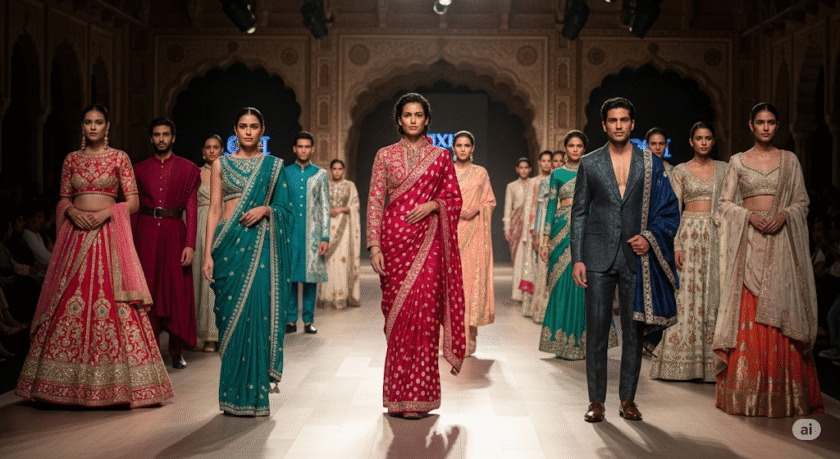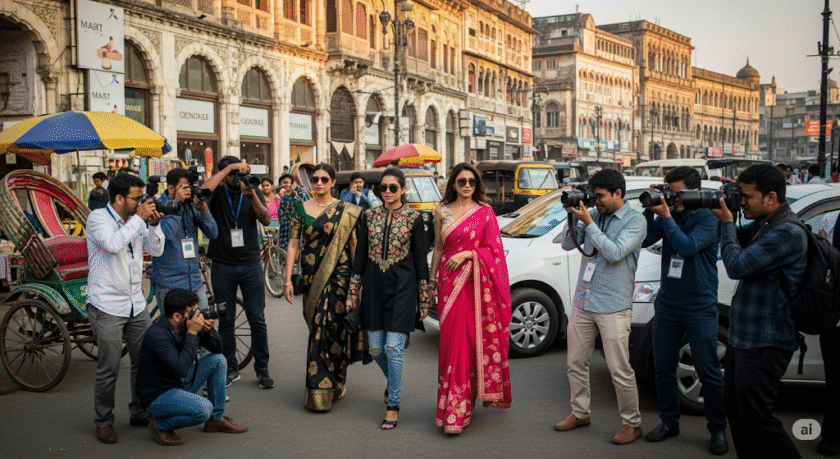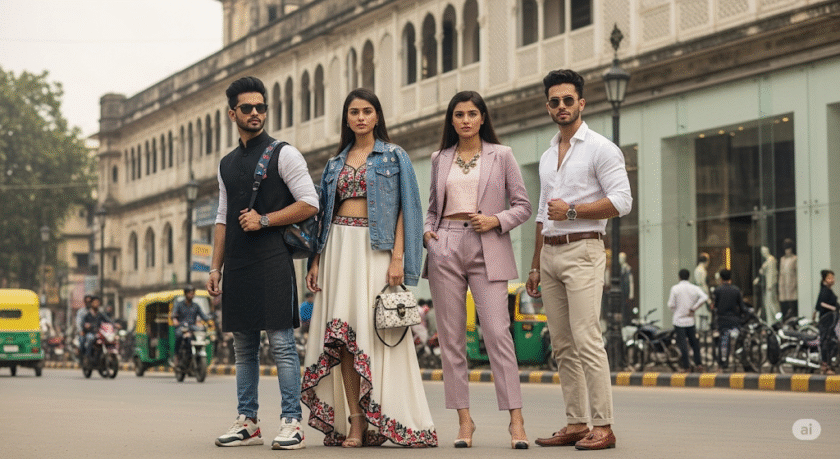Lucknow – Sustainable fashion is dominating global trends in 2025, driven by a heightened focus on environmental responsibility, ethical production, and cultural preservation. Building on the momentum seen in cities like Lucknow, where Khadi fashion has taken center stage, here’s a look at the key sustainable fashion trends shaping the industry this year.
1. Revival of Traditional Fabrics like Khadi
Khadi, India’s hand-spun, handwoven fabric, continues to lead the sustainable fashion movement. Designers like Sabyasachi Mukherjee and Anavila Misra are reimagining Khadi in modern silhouettes, creating everything from structured denim jackets to flowy bridal lehengas and tailored kurtas. Its eco-friendly production—no electricity, minimal water, and zero chemicals—combined with its breathable texture, makes it a favorite. In Lucknow, recent fashion shoots, such as one featuring three girls in Khadi kurtas and jackets near the Residency, highlight its versatility. “Khadi isn’t just fabric; it’s a movement,” says designer Priya Sharma. “It supports rural artisans and reduces our carbon footprint.”
2. Upcycling and Zero-Waste Design
Upcycling is a major trend, with brands transforming textile waste into high-fashion pieces. Designers are repurposing old sarees, denim scraps, and factory offcuts into patchwork jackets, bags, and dresses. Zero-waste design techniques, where patterns are cut to use every inch of fabric, are also gaining traction. For instance, Mumbai-based label Doodlage creates trendy co-ord sets from fabric scraps, while Lucknow’s local artisans are upcycling vintage chikankari kurtas into modern overlays. A recent X post noted, “Upcycled fashion at Lucknow’s Sanatkada Festival was a game-changer—sarees turned into jumpsuits stole the show!”
3. Slow Fashion and Timeless Pieces
The slow fashion movement emphasizes quality over quantity, encouraging consumers to invest in durable, timeless pieces. Brands like Charkha Tales and Terra Luna are promoting Khadi kurtas and sarees that transcend seasonal trends, priced between ₹1,049-₹1,499 on platforms like Myntra. In Lucknow, fashion photographers are capturing this ethos in natural settings, showcasing long-lasting Khadi anarkalis with intricate block prints. “Slow fashion is about creating pieces that tell a story and last a lifetime,” says photographer A.Rrajani, who recently shot a series featuring Khadi wear at Ekana Cricket Stadium.
4. Plant-Based and Vegan Materials
Plant-based fabrics like organic cotton, hemp, and linen are replacing synthetic fibers, while vegan leather made from pineapple leaves (Piñatex) and mushroom mycelium is trending for accessories. Designers are also experimenting with natural dyes derived from turmeric, indigo, and marigold, reducing water pollution. In India, brands like Raymond are incorporating these materials into their Khadi collections, blending sustainability with style. A recent Vogue India article (April 2025) highlighted a Lucknow-based label using hemp-Khadi blends for monsoon-ready jackets, noting their durability and eco-appeal.
5. Circular Fashion and Rental Models
Circular fashion, which focuses on extending the lifecycle of garments, is gaining popularity. Rental platforms like Flyrobe and Rent It Bae are thriving, offering designer Khadi lehengas and sarees for events at a fraction of the cost. Resale markets are also booming, with apps like Poshmark India enabling users to buy and sell pre-loved Khadi pieces. “Renting a Khadi lehenga for my cousin’s wedding saved me money and felt so sustainable,” shared a user on X. In Lucknow, this trend is catching on, with local boutiques offering rental options for festive wear.
6. Tech-Enabled Sustainability
Technology is playing a role in sustainable fashion, with innovations like blockchain ensuring transparency in supply chains. Brands are using QR codes on labels to show the journey of a Khadi garment—from the artisan who spun it to the store. Additionally, AI-driven design tools are helping create zero-waste patterns, while 3D printing is being explored for accessories. A recent report from the Fashion Institute of Technology (FIT) noted that 60% of Indian brands, including those in Lucknow, are adopting tech to enhance sustainability in 2025.
7. Cultural Preservation Through Fashion
Sustainable fashion is also about preserving cultural heritage. In Lucknow, the Mahindra Sanatkada Festival (January 2025) showcased Khadi creations alongside crafts like chikankari and zardozi, supporting artisans and promoting traditional techniques. Designers are collaborating with rural weavers to create collections that celebrate India’s textile legacy while appealing to modern audiences. “Wearing Khadi is like wearing history,” says Anupama Pandey of Sanatkada. “It connects us to our roots while being kind to the planet.”
Challenges and Future Outlook
Despite the progress, challenges remain. High production costs of sustainable materials like Khadi can make them less accessible, though initiatives by the Khadi & Village Industries Commission (KVIC) are helping scale production. Consumer awareness is also growing, with more people prioritizing ethical brands, especially in urban centers like Lucknow, which is seeing a creative boom with projects like Aero City.
As sustainable fashion continues to evolve, its fusion of ethics, innovation, and style is setting a new standard. In Lucknow, where fashion photography is capturing this shift—think Khadi kurtas against the backdrop of Safed Baradari—the city is proving that sustainability can be both beautiful and impactful. “This isn’t a trend; it’s the future,” says A.Rrajani. “Fashion that doesn’t harm the planet is the only way forward.”





